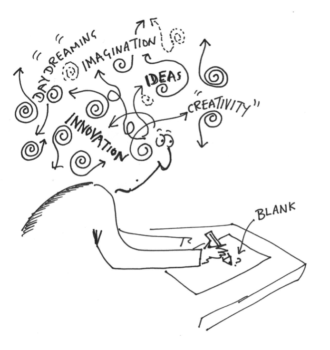
In 2009 Sir Jim Rose’s Report on ‘Identifying and Teaching Children and Young People with Dyslexia and Literacy Difficulties’ gave the following definition of dyslexia, which was adopted by the BDA Management Board, but with the addition of the further paragraph shown below, which should always appear with it:
The definition of dyslexia adopted in the report is as follows:
‘Dyslexia is a learning difficulty that primarily affects the skills involved in accurate and fluent word reading and spelling.
- Characteristic features of dyslexia are difficulties in phonological awareness, verbal memory and verbal processing speed.
- Dyslexia occurs across the range of intellectual abilities.
- It is best thought of as a continuum, not a distinct category, and there are no clear cut-off points.
- Co-occurring difficulties may be seen in aspects of language, motor co-ordination, mental calculation, concentration and personal organisation, but these are not, by themselves, markers of dyslexia.
A good indication of the severity and persistence of dyslexic difficulties can be gained by examining how the individual responds or has responded to well founded intervention.’
In addition to these characteristics, the BDA acknowledges the visual and auditory processing difficulties that some individuals with dyslexia can experience, and points out that dyslexic readers can show a combination of abilities and difficulties that affect the learning process.
Some also have strengths in other areas, such as design, problem solving, creative skills, interactive skills and oral skills.
In October 2007, the BDA Management Board approved the following definition:
“Dyslexia is a specific learning difficulty that mainly affects the development of literacy and language related skills. It is likely to be present at birth and to be life-long in its effects. It is characterised by difficulties with phonological processing, rapid naming, working memory, processing speed, and the automatic development of skills that may not match up to an individual’s other cognitive abilities.
It tends to be resistant to conventional teaching methods, but its effect can be mitigated by appropriately specific intervention, including the application of information technology and supportive counseling”
“Some learners have very well developed creative skills and/or interpersonal skills, others have strong oral skills. Some have no outstanding talents. All have strengths.”
(Dr.Lindsay Peer, 2006)
On the British Dyslexia Association website, they have written:
“So how do you tell if a child may be dyslexic? There are some obvious signs, if you know what to look for. But not all children have the same cluster of abilities or difficulties.
Look out for the following areas of weaknesses which will appear alongside abilities, which may be in areas of creativity or in highly developed verbal skills:
- General.
- speed of processing: spoken and/or written language slow;
- poor concentration;
- has difficulty following instructions;
- forgetful of words.
- Written Work.
- has a poor standard of written work compared with oral ability
- produces messy work with many crossings out and words tried several times, eg wippe, wype, wiep, wipe;
- is persistently confused by letters which look similar, particularly b/d, p/g, p/q, n/u, m/w;
- has poor handwriting with many ‘reversals’ and badly formed letters;
- spells a word several different ways in one piece of writing;
- makes anagrams of words, eg tired for tried, breaded for bearded;
- produces badly set-out written work, doesn’t stay close to the margin
- has poor pencil grip;
- produces phonetic and bizarre spelling: not age/ability appropriate;
- uses unusual sequencing of letters or words.
- Reading.
- makes poor reading progress, especially using look and say methods;
- finds its difficulty to blend letters together;
- has difficulty in establishing syllable division or knowing the beginnings and endings of words;
- pronunciation of words unusual;
- no expression in reading comprehension poor;
- is hesitant and laboured in reading, especially when reading aloud;
- misses out words when reading, or adds extra words;
- fails to recognise familiar words;
- loses the point of a story being read or written;
- has difficulty in picking out the most important points from a passage.
- Numeracy.
- shows confusion with number order, eg units, tens, hundreds;
- is confused by symbols such as + and x signs;
- has difficulty remembering anything in a sequential order, eg tables, days of the week, the alphabet.
- Time.
- has difficulty in learning to tell the time;
- shows poor time keeping and general awareness;
- has poor personal organisation;
- has difficulty remembering what day of the week it is, their birth date, seasons of the year, months of the year;
- difficulty with concepts – yesterday, today, tomorrow.
- Skills.
- has poor motor skills, leading to weaknesses in speed, control and accuracy of the pencil;
- has a limited understanding of non verbal communication;
- is confused by the difference between left and right, up and down, east and west;
- has indeterminate hand preference;
- performs unevenly from day to day.
- Behaviour.
- employs work avoidance tactics, such as sharpening pencils and looking for books;
- seems to ‘dream’, does not seem to listen;
- is easily distracted;
- is the class clown or is disruptive or withdrawn (these are often cries for help);
- is excessively tired due to amount of concentration and effort required”.
“A child who has a cluster of these difficulties together with some abilities may be dyslexic.
Your next step should be to consult the school’s SENCo immediately and to decide whether the parents should be informed and the child given appropriate help”
If you are interested in the secondary student profile: http://www.bdadyslexia.org.uk/educator/hints-and-tips-secondary